5 Major Accomplishments From John F. Kennedy’s Presidency
John F. Kennedy would be 103 years old today. Despite his short term as president, he accomplished some very important things that were not only beneficial for America but the rest of the world as well.
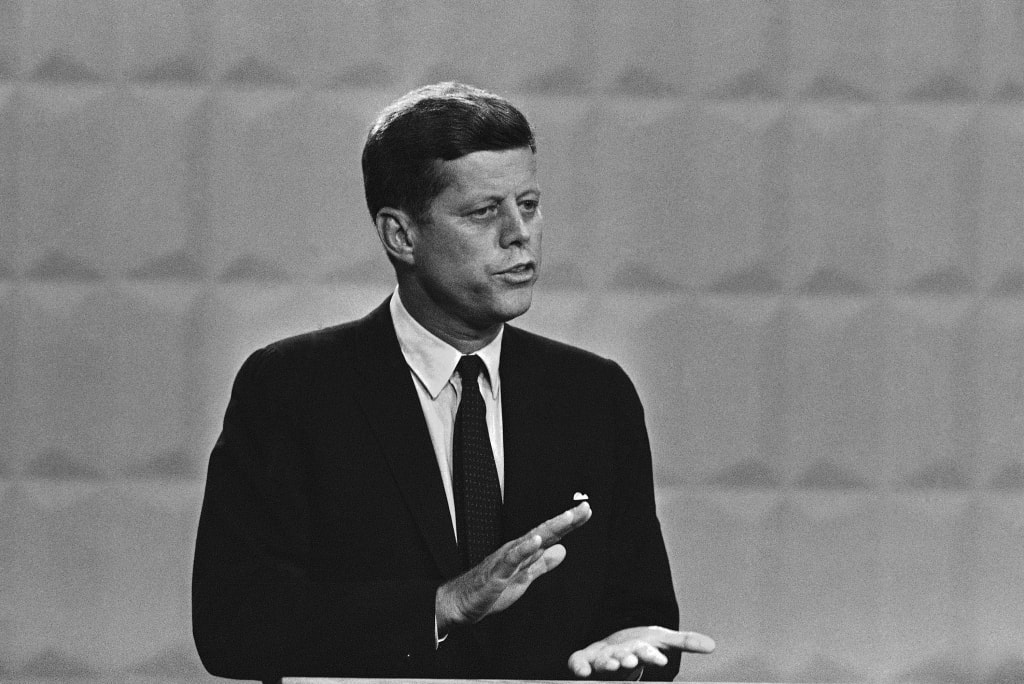
John F. Kennedy was the 35th President of the United States and held office from January 21, 1961, until his death on November 22, 1963. He was president for a total of 1,037 days.
Although his time as president was cut short, the Kennedy administration was able to establish some very important legislation to help American citizens.
He Improved the U.S. Economy
The Recession of 1960-61 began in April 1960 and lasted 10 months, ending in February 1961. By the time Kennedy took office in January 1961, the United States was in the middle of financial trouble. The GDP was on the rise in Q2 and Q3 of 1960 but saw a decline to -5.0% in the final quarter of that year. Unemployment also reached a peak of 7.1% by May 1961.
To overcome this recession, President Kennedy turned to a stimulus package that could balance the U.S. economy. This included increasing the minimum wage, expanding unemployment benefits, promoting Social Security benefits to encourage workers to retire at an earlier age, spending more on highway construction, and pushing for lower tax rates.
The latter is one of the lasting impacts that remain recognizable in today’s economy. At the time, several lawmakers were worried that reducing tax rates without limiting spending might lead to even larger budget deficits. Although Congress didn’t approve the final tax cuts until after Kennedy’s death, the federal budget deficit did inedibly shrink.
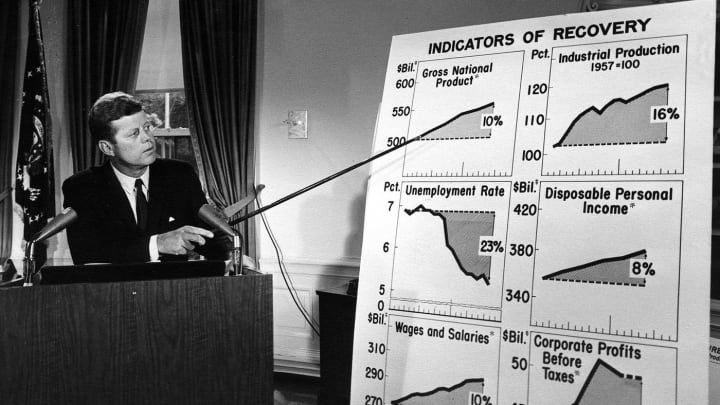
During Kennedy’s time in office, he was able to expand the GDP’s growth average from 2.2% per annum to 5.5% from 1961 to 1963. Inflation remained at 1%, industrial production rose by an incredible 15%, and the unemployment rate decreased dramatically.
Once the recession ended, the United States entered the second-longest economic expansion in their history, from February 1961 until the Recession of 1969-70. Only the 1990s was able to have a longer sustained period of growth than the 1960s.
He Created the Peace Corps
Established on March 1, 1961, by Executive Order 10924, the Peace Corps is one of the most successful programs to come from the Kennedy administration. The program was put in place to help underdeveloped nations with farming, education, health care and construction. It became a hit with college students who saw it as an opportunity to travel while also being able to help those in need.
Kennedy’s brother-in-law, Sargent Shriver, was the program’s first director. Shriver formed a top-notch team that was able to build the foundation of the organization and outline their goals for the future.
In the entire history of the Peace Corps, the organization has seen around 235,000 American volunteers who have served in 141 countries. Some of the initiatives the program has worked on include eradicating malaria and assisting countries with ongoing crises.
He was Responsible for the Equal Pay Act of 1963
The Equal Pay Act of 1963 was signed into law on June 10, 1963. Its creation was meant to abolish wage disparity based on sex. This problem was always prevalent, especially after WWII. At the time, more women were joining the workforce and taking jobs originally held by men. Amending the Fair Labor Standards Act of 1938, the updated EPA was a major change that needed to be done in order to close the wage gap in women’s pay.
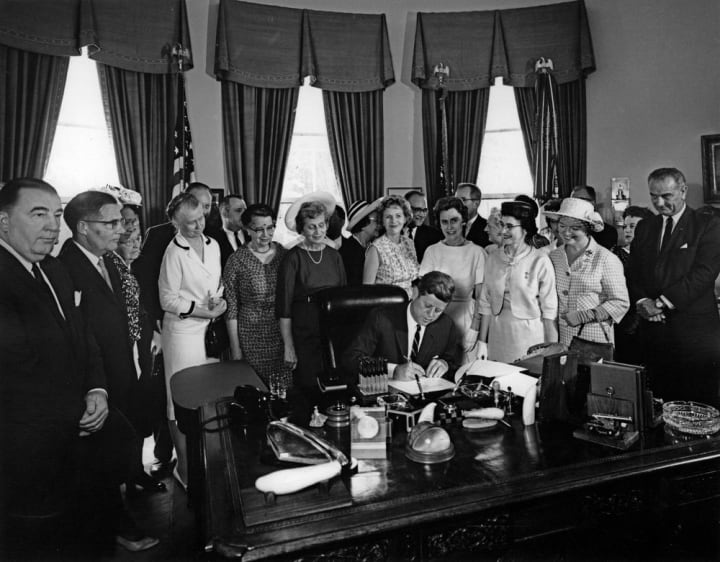
This was one of the projects closely associated with Kennedy’s administration and the New Frontier Program. The addition of the Equal Pay Act of 1963 was "the first step towards an adjustment of balance in pay for women.”
Unfortunately, the goal Kennedy had in mind for wage equality has yet to be achieved. There are still wage gaps between gender and race in the United States. Although women’s salaries have increased dramatically, problems remain.
He Contributed to the Partial Nuclear Test Ban Treaty
The 1960s saw the height of the Cold War between the United States and the Soviet Union. To minimize the expanding nuclear arms threat and to protect the environment, JFK started discussing ways to address these specific concerns with the Soviet Premier, Nikita Khrushchev.
On August 5, 1963, the United States, the Soviet Union, and the United Kingdom signed the Partial Nuclear Test Ban Treaty in Moscow. From then on, nuclear testing was banned from experimenting on the ground, in the atmosphere and underwater. This resulted in most countries completing nuclear testing underground.
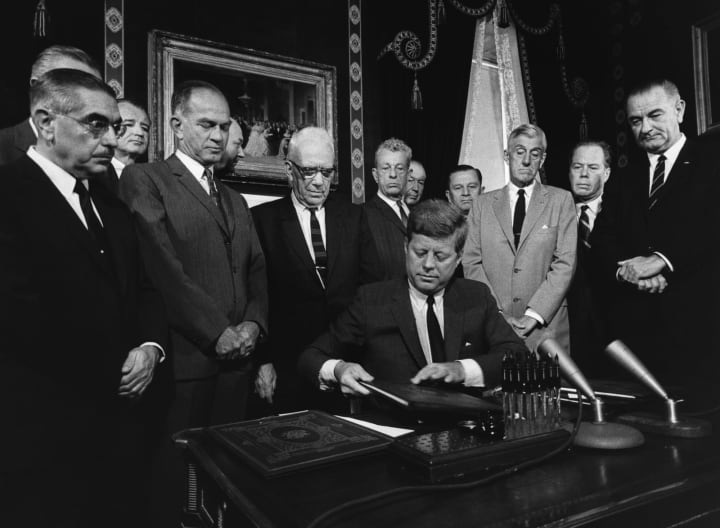
Not only did he contribute to the creation of the Partial Nuclear Test Ban Treaty, but he also averted nuclear war with the Soviet Union. In October 1962, the world was at the brink as the U.S. discovered the Soviet Union was building missiles in Cuba. Instead of acting rashly, the president set up a blockade that averted any Soviet ships from passing a certain point. Eventually, Khrushchev agreed to remove the missiles from Cuba if the United States removed theirs from Turkey.
He Established the Basis for the Civil Rights Act of 1964
During the 1960s, racial tensions reached an all-time high. In most of the country, segregation between blacks, minorities and whites was still extremely prevalent. Many people’s views of the matter were outdated, and Kennedy knew he had to act now. The Civil Rights Act of 1964 was created to “outlaw discrimination based on race, colour, religion, sex, or national origin.” It also prevented the unequal application of voter registration requirements, and racial segregation in schools, in public facilities and at places of employment.
This landmark civil rights bill was passed in 1964 by President Lyndon B. Johnson, but the bill was first proposed by the Kennedy administration. Kennedy had brought this piece of legislation to the United States Senate in June 1963 after his incredibly moving speech to the nation on civil rights. Ultimately, the bill stalled in the Senate.
After Kennedy was assassinated on November 22, 1963, Johnson pushed for the bill to be passed by congress. The United States House of Representatives passed the civil rights bill in February 1964. Due to a 54-day filibuster, it took until June 1964 for the bill to pass in the Senate. On July 2, 1964, Johnson signed the Act into law once an agreement was reached between the House of Representatives and the Senate on an amendment to the bill.
Despite having an incredibly short life and presidential career, John F. Kennedy made the most of his time. He not only helped the U.S. economy out of a recession, but he created the Peace Corps, helped women achieve fairer wages, contributed to the partial ban of nuclear testing and established the Civil Rights Act of 1964. Without these key pieces of legislation, the United States would look even more different than it does today.
About the Creator
Shandi Pace
History lover, music nerd and sports fanatic. | Instagram & Twitter: @shandipace, YouTube: https://www.youtube.com/shandipace


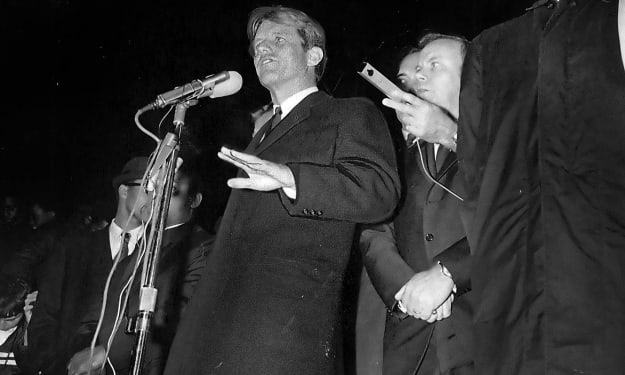



Comments
There are no comments for this story
Be the first to respond and start the conversation.